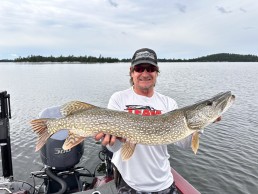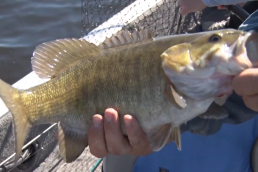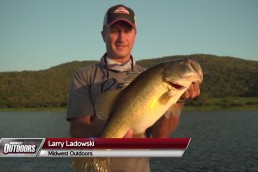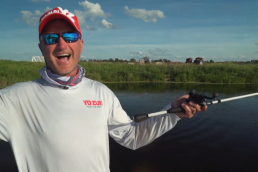Bouncing Between Shallow and Deep Walleye (and Bass) Bites
SHARE THIS POST
Sometimes, when you hear people sharing walleye fishing stories at the boat landing, in cabins, or at resort gathering spots, you’ll hear folks ask, “How deep were they?” I recall a time at a sports show back in the 1990s when a fan of our TV show was chatting with me at our booth about an episode he’d seen. I was catching walleyes on Mille Lacs during the segment, and he said, “And you were catching them in 24 feet.” He seemed intent on fishing this depth his next time on the lake because that’s where he’d seen walleyes being caught.
As walleye anglers know, while depth can be a factor in catching success, it’s just one of many variables that come into play when you’re searching for more bites. And just because, “They bit in 24 feet” one day, it doesn’t mean you’ll always find fish at that depth.
On every North Country lake with decent fish populations—especially large bodies of water—there are simultaneous bites going on throughout the fishery in a variety of depths and different types of structure. In lakes with dynamic, healthy gamefish populations—such as Rainy Lake up on the Minnesota/Ontario border—you will find a variety of spots where you can catch fish. When you add the fact that in many spots you can catch walleyes, smallmouth bass, and northern pike all in the same area. It adds to the fun to a day on the water.
Other than during the spawn and immediate recovery period thereafter, walleye location will always be determined by availability of forage. Find the forage and find the predators. Rainy Lake is a vast body of water, over a quarter of a million acres, and provides diverse habitat for gamefish and prey alike.
Being an oligotrophic lake, meaning semi-sterile with low nutrients, clear deep-water basins, and minimal weed growth, huge sections of the lake are dominated by rock/gravel/sand bottom. While there are some huge, shallow, weedy bays, you won’t find bluegills or sunfish, although there are some giant crappies in the system. Rainy Lake has a yellow perch population, but they aren’t present in huge numbers, and the majority don’t make it past baitfish size because the fishery is so full of predators.
Other than eating each other in various stages of their respective growing cycles, walleyes, smallmouths and northern pike focus on crayfish and various baitfish/shiner species, as well as cyclical explosions in the numbers of smelt and ciscoes. The availability and location of the forage species, as on any lake, is what drives the location of gamefish on Rainy Lake. And because forage can be found shallow, deep, and in between, you can fish in all these spots and usually contact fish.
The time of year you’re fishing the lake can determine where you focus your efforts. From ice-out in early May through early July, you’ll find walleyes and smallmouths in the shallows in huge numbers, virtually everywhere you go. Water temps are a factor in fish locations, as well as variables like moon phase, sunny or cloudy conditions, and whether it’s windy or calm.
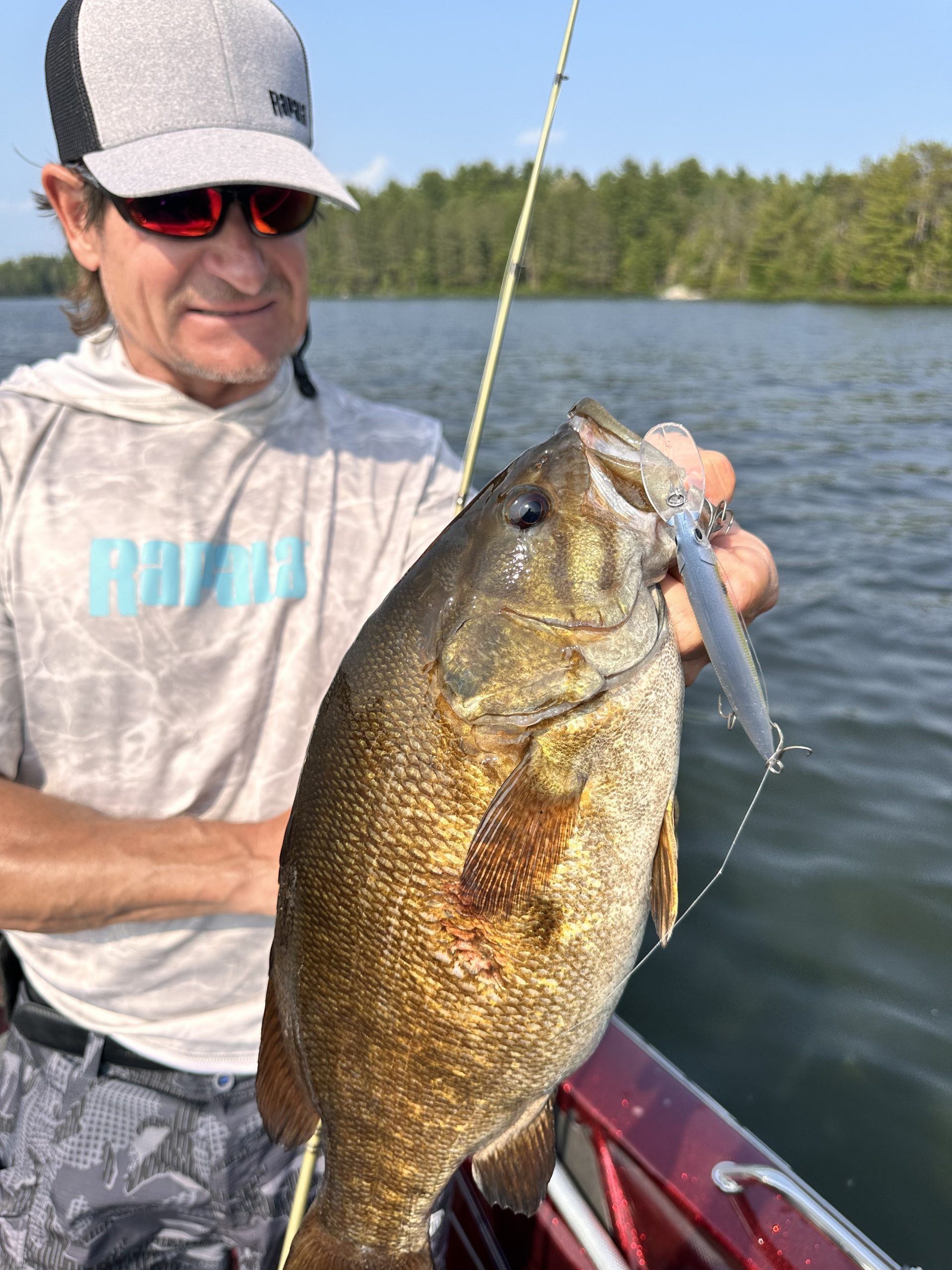
Post-spawn walleyes stage off the first main shoreline breaks in 8 to 20 feet of water, sliding up or down this edge based on the variables above. Wind on a shoreline will drive them shallower to feed on disoriented baitfish. If there’s a patch of cabbage alongside a deep edge, walleyes (and bass and pike) will use it for cover.
Speaking of pike, the big girls (Rainy boasts a strong population of 20-pound plus northerns) will hover around the shallows until water temps push above the mid-60s. Water temps above this level are intolerable for mature pike, and the trophy-sized specimens migrate to the deep basins to stay near the thermocline, chasing walleyes, perch, smelt and ciscoes in the depths; or around the numerous deep reefs that are scattered throughout the various basins of Rainy Lake.
From mid-summer through early fall, many of the big walleyes in the lake will also hold in the deeper basin and relate to these deep-water reefs. Vertical jigging techniques are popular for catching these reef dwellers.
This fishery is world-class when it comes to smallmouth bass, and it’s one of my favorite lakes to visit for bronzebacks. Anytime you visit Rainy Lake between May and September, it’s possible to set up on a shoreline, creep along with your Minn Kota, and cast the shallows as well as deeper breaklines to catch both walleyes and bass. While there will be lots of walleyes in the deep basin in mid-summer, some portion of the population always holds in the shallows. There is simply too much forage as far as crayfish, perch and other baitfish for the predators.
If you’re standing on the bow of my Skeeter on Rainy Lake, you’ll see the lineup of lures we use throughout the open-water season: a shallow- and a deep-running jerkbait (We love Rapala Mavriks for their awesome color selection, action, and also the super-sticky VMC Redline trebles.); a 3-inch swimbait like a Crush City Mayor rigged on a VMC Mooneye or Sleek Jig; a diving crankbait like a DT-6 or DT-8 (typically in natural crayfish color); a VMC Moontail hair jig; a black marabou finesse jig; a wacky-rigged or Texas-rigged plastic worm; and on windy days, a 1/2-oz. white spinnerbait. Lastly, as long as it’s past early spring and water temps are 60-plus degrees, one or two topwater lures always are on the deck: a subtle popper-style like an X-Rap Pop, and a large-profile walking bait like a Spook or PXR Jowler.
Are you enjoying this post?
You can be among the first to get the latest info on where to go, what to use and how to use it!
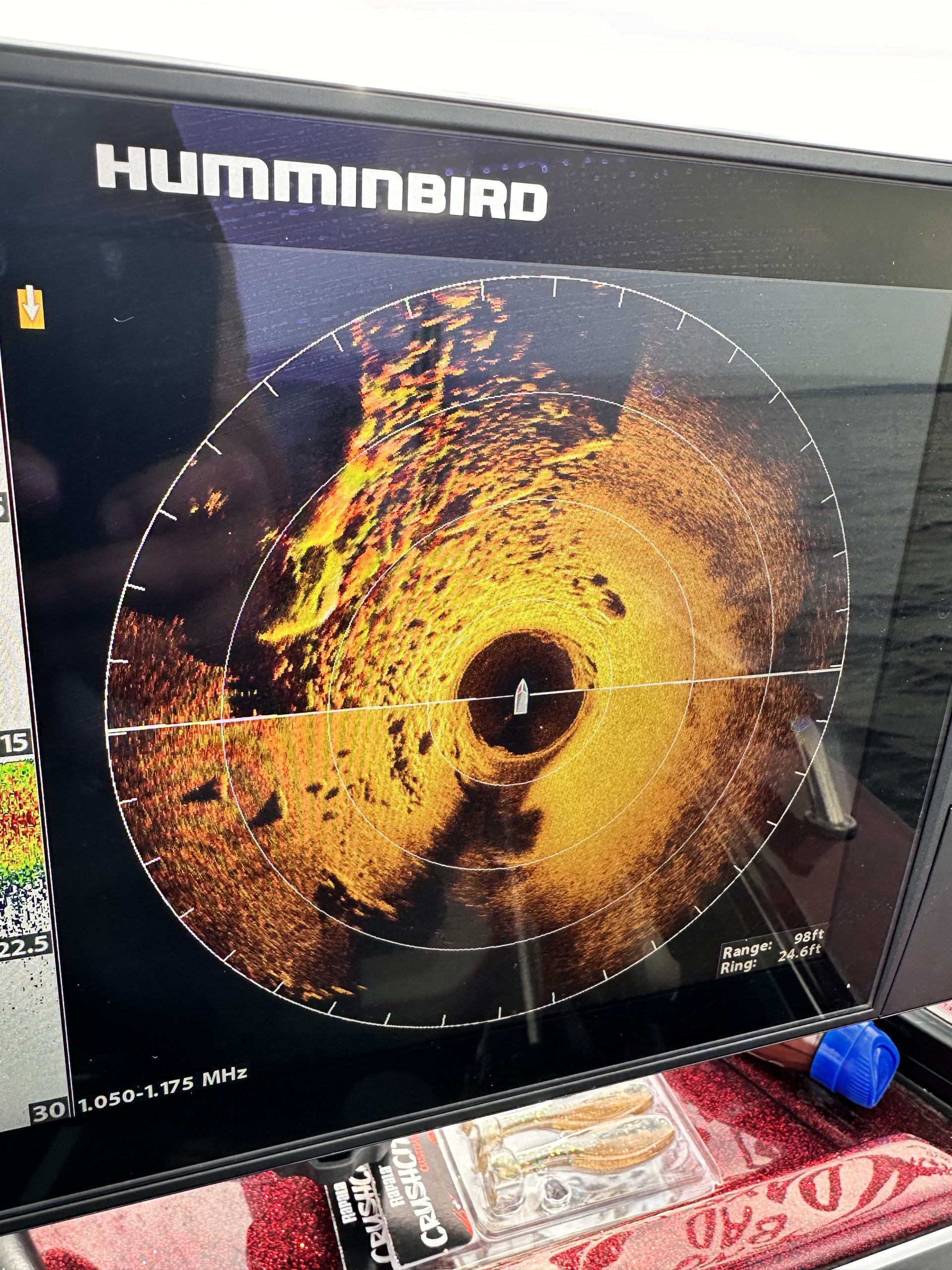
As we fish our way down shorelines, we rely on Humminbird MEGA 360 imaging—an indispensable tool. It shows exact rock structure in a 100-foot circumference around the boat—down to the smallest stones, the size of the rocks, and transition lines such as between rock and sand. Rock structure dominates the shorelines throughout Rainy Lake. Bigger boulders (shown with larger shadows on 360) offer cover for predators, and gravel/smaller rubble is home to crayfish.
Transitions between types of bottom content are natural “edges” that fish relate to. It’s common during mid-summer to catch both bass and walleyes with scraped noses and chins from burying their faces into rocks while foraging on craws.
Typically, with two anglers in the boat, we’ll rotate through the selection of baits depending on the type of structure out front and to the shallow and deep sides of the boat. Jerkbaits frequently produce fish, choosing shallow or deep divers depending on the depths within casting distance.
A swimbait is versatile; it can be pitched to very shallow water, retrieved at varying speeds to stay just above contact with the bottom, or cast to deeper edges and fished very slowly or with sweeping “up and down” rod action to work the deeper water column. A diving crankbait can be bounced of boulders and gravel to imitate fleeing crayfish and trigger strikes.
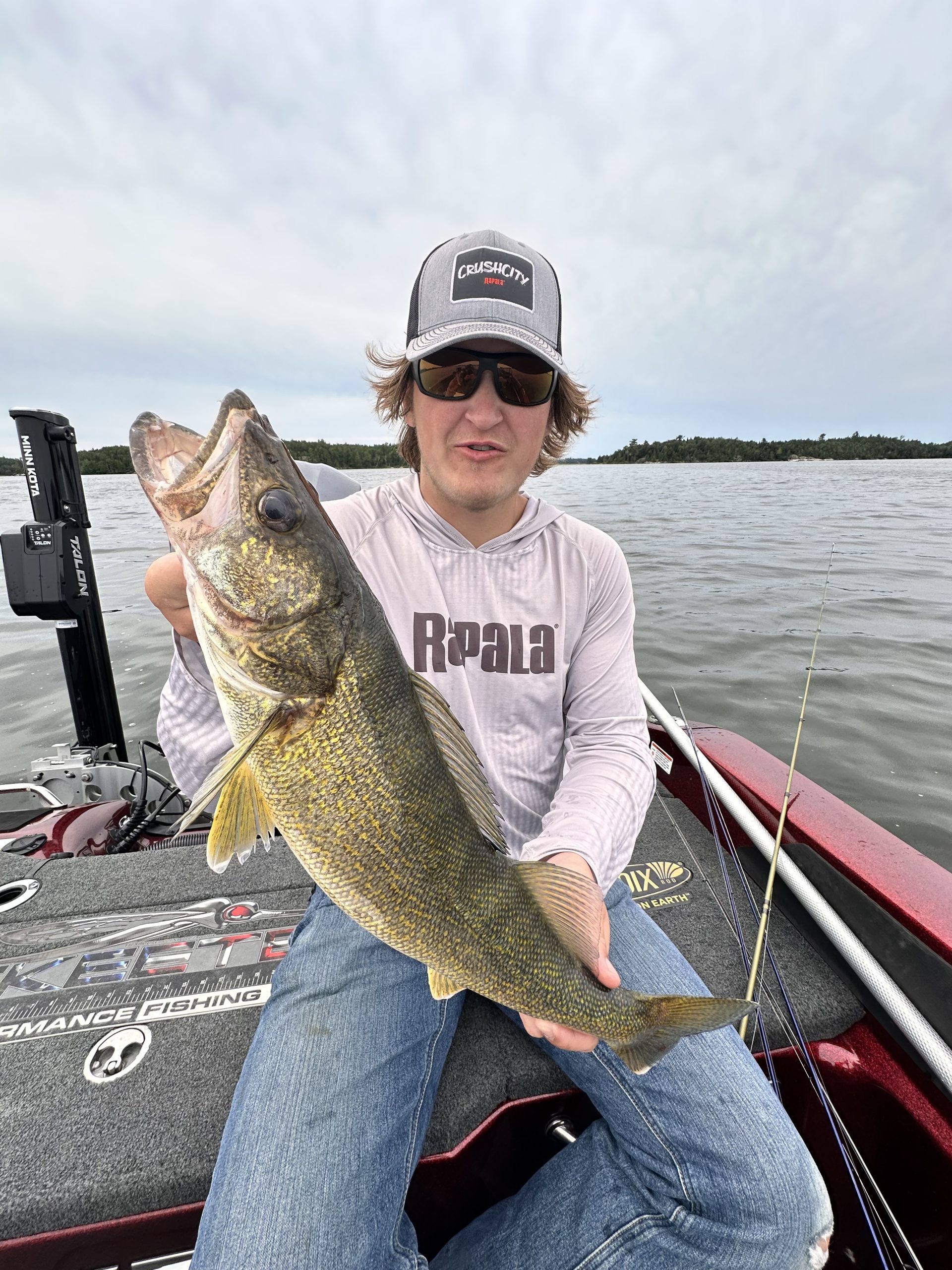
A topwater lure delights with explosive surface attacks. On windy days, the spinnerbait (or a larger 4- to 5-inch swimbait) can be deadly on windy shorelines and over shallow near-shore rock structure exposed to wave action.
Hair jigs come into play in different ways. The Moontail, with its aspirin-head design and sleek profile, can be bombed on long casts along deeper breaklines and snapped back to the boat to trigger walleyes and bass holding deeper. The marabou is for dropping vertically under the boat when walleyes or bass school up and follow a hooked fish, and then linger beneath the hull. Sometimes, a fish “mark” will appear on 2D sonar beneath the transom or trolling motor. Drop the hair jig straight down and hold it perfectly still. The “pop” you soon feel is from a hungry bass or walleye just below your feet!
Rainy Lake, and other North Country lakes with similar characteristics, offer great fishing in both the shallows and deeper basin areas throughout the open-water season. Check a variety of locations (and depths) to maximize bites during a day’s fishing on these fisheries.
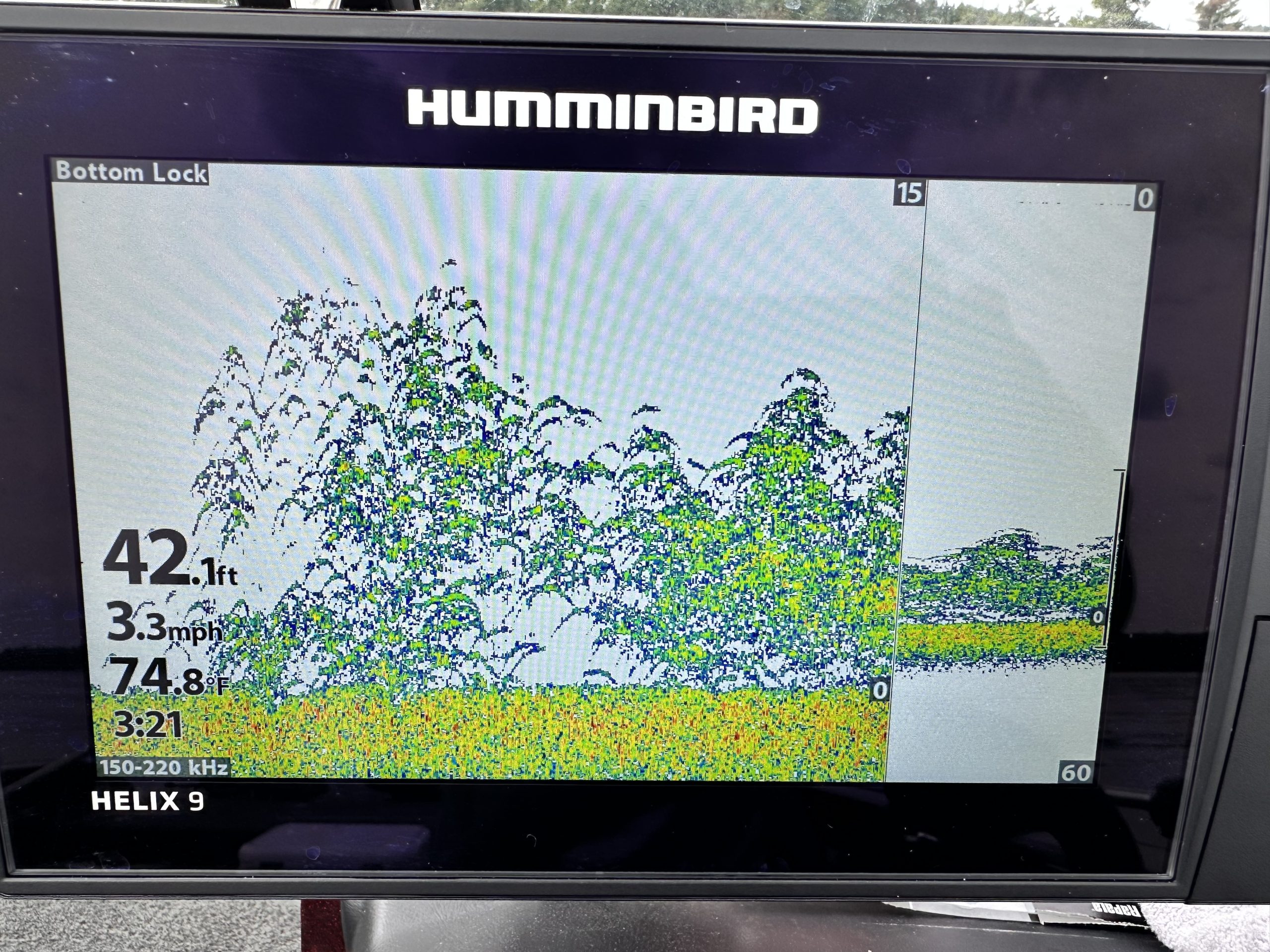
MWO
SHARE THIS POST
Did you enjoy this post?
You can be among the first to get the latest info on where to go, what to use and how to use it!
